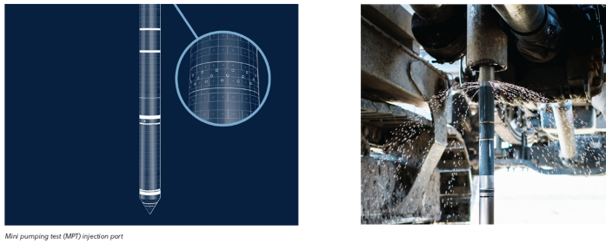Infrastructure development projects often face uncertainties related to subsurface conditions, including the hydrological and geotechnical behavior of the soil. Effective groundwater monitoring, for instance, against backward erosion piping, can improve the design and better characterize the risk. Fugro improves the conventional cone penetration test (CPT) by adding a filter port where water is continuously injected during penetration (see Fig.1). This method measures flow rate and pressure, providing a continuous profile of relative permeability alongside standard CPT data. In developing such devices, a digital twin would be beneficial because it offers design choices not easily accessible in the laboratory. Moreover, a digital twin enabled by mathematical/numerical modeling allows investigation of how the measured quantities of inject water correlates to the intrinsic soil properties.

Fig. 1 Fugro Aquisense® technology
Assignment
In addition to the probing of soil profiles in depth with conventional cone penetration, Aquisense® injects water with a ratio of 0.1 – 5.0 L/min to perform a so-called mini pumping test. The entire process is multi-physical and highly dynamic, in the sense that there is a strong coupling between the soil grains and the pore water which could mobilize the grains close to the injection port. In this project, you will use the discrete element method (DEM) to solve the grains’ motion and the pore finite volume (PFV) fluid-coupling scheme available in “YADE” to describe the hydrodynamic coupling on the grains. The outcome of this project is a digital twin of Aquisense® with which a user can virtually control parameters such as the probing speed and injection ratio, as well as the grain size distribution.
Learning goals
- Extending an existing DEM code for CPT tests from fully dry to fully saturated
- Incorporating the injection port into the geometry and implement the water injection boundary condition
- Assessing the influence of the water injection rate on soil deformation and fluid flow
- Perform virtual mini-pumping tests to check the accuracy of Aquisense’s measurement of soil permeability





